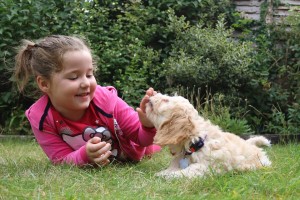Latest Posts
- Have a purpose when backyardingAugust 5 2021
- Study: Time outside alters our microbiomeAugust 4 2021
- Happy National Mutt Day from Mo-MoJuly 27 2021
- New home? Avoid these common mistakes in your yard.July 26 2021
- Infographic: Plan a backyard staycation this summerJuly 22 2021
Categories
Archive
March 9th
TurfMutt’s tips for pet-friendly spring planting

Spring is in the air! That means many people are getting the “fever” to work in their yard and start planting something green.
If you have pets, TurfMutt reminds you to design a yard that not only works for your family, but also works your pet’s health and safety. In addition to choosing the right grasses, shrubs, trees and flowering plants for your climate zone, consider these tips from TurfMutt.
- Think about what your dog needs.
Dogs love living landscapes and love being in your yard. What does your dog need the most? Most pets need a place to romp and exercise, relax in the shade for an afternoon nap, and take bathroom breaks. - Pick “dog-proof” ground coverings.
Grass is one of the best ground coverings around because it can handle the wear and tear that comes with pets and children. Bermuda and buffalo grass are especially hardy, and they can withstand dry spells, too. Grass also delivers great health benefits for you and your family by producing oxygen, sequestering carbon, capturing storm water runoff, and cleaning and filtering rain water. - Select plants for your climate zone and also your pet.
Be sure to check the ASPCA’s list of toxic and non-toxic garden plants before choosing plants and shrubs. For areas near garden paths, select plants that have soft foliage, but are still sturdy enough to withstand a little canine “ruff”-housing. But you also want to ensure they are non-toxic to pets who like to chew foliage and other growing plants. - Avoid plastic grass.
Plastic grass, also known as artificial turf, gets too hot for humans and pets, especially in summer months. A Brigham Young University study revealed that synthetic-turf surface temperatures were 37° higher than asphalt and 86° hotter than natural turf. A Penn State study found it wasn’t uncommon for temperatures to surpass 150° and can reach up to 200° on plastic grass! - Plant for pollinators for other wildlife.
Your dog isn’t the only one who uses your yard. Keep pollinators (bees, butterflies and hummingbirds) and other wildlife in mind when you are selecting plants, trees and shrubs.
Learn more about how living landscapes benefit people and pets and for more tips on taking care of your green spaces.





